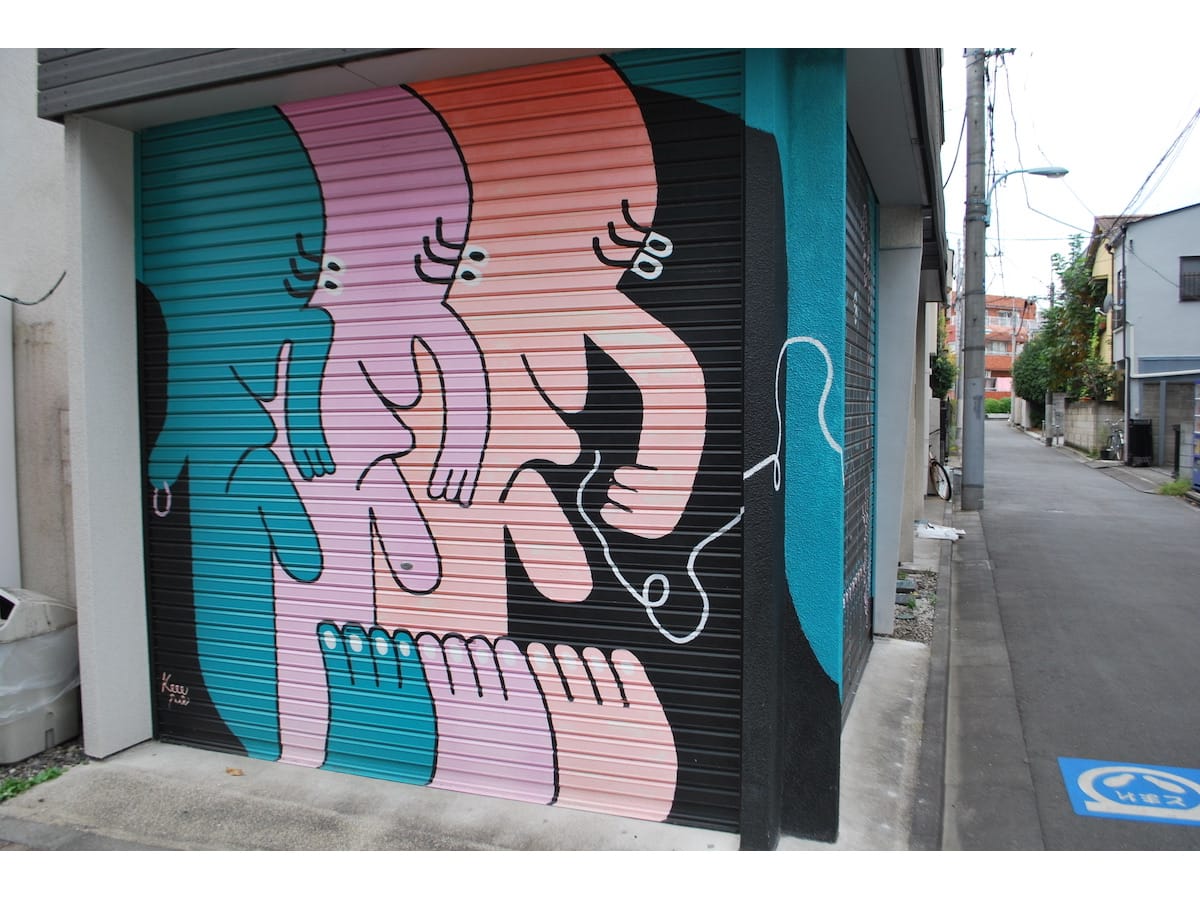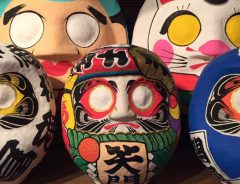
Photo by George Lloyd - A mural in Koenji by the artist Keeenue
The Koenji Mural City Project is a celebration of local street artists
- Tags:
- Graffiti / Koenji / Koenji Mural City Project / mural art / street art
Related Article
-

The vegan rave where everyone devours an edible mandala at a set hour
-

Japanese Graffiti Artist Combines Street Art With Traditional Daruma Dolls
-

Japanese project fuses art and Braille blocks to “create new paths” for the visually impaired
-

What’s ‘Z’ doing in Japan? Multiple graffiti incidents reported in popular tourist city
-

Have Your Cup And Eat It Too With Tokyo’s Cute Coffee In Ice Cream Cones
-

Eiji Tamura, artist behind colorful, street art-style dog paintings to hold Tokyo exhibition


For a city of its size, and the capital of a country with such a strong graphic art tradition, it’s surprising not to see more street art in Tokyo. When you consider the open-air art galleries of Chelsea in New York, Shoreditch in London or Fitzroy in Melbourne, you have to wonder why Tokyo is so lacking in spontaneous, freestyle creativity.
But that would be to overlook the particularities of Tokyo. The murals you see in big western cities might be celebrated by the mainstream today, but until quite recently, street art was criminalized and marginalized there too. Graffiti, street art and murals emerged as responses to living in neglected, rundown parts of town.
A mural in Koenji by artist Yuji Oda | Photo by George Lloyd
Street art would probably have remained a pretty marginal art form, were it not for the western art world. Under a barrage of accusations of being either elitist or obscurantist, the art market has embraced street art as a way of giving itself a shot in the arm.
Japanese artists must look on in wonder at so much bickering and self-consciousness, not to mention so much urban neglect. Tokyo has never had to contend with the kind of urban blight that has disfigured so many parts of London and New York, and as a result, only a handful of Japan’s young artists developed the DIY punk ethos of their peers in the United States, Europe and Australia.
Photo by George Lloyd
Many of the most talented contemporary artists in Japan are unable to make a living through their art alone. This is partly because small private galleries featuring the work of rising Japanese artists are few and far between.
Manga and anime are so popular in Japan that many artists can readily find work. But that still leaves a lot of anonymous, uninspiring cityscapes, not to mention a lot of artists with ideas that don’t fit in with manga or anime formulas.
Photo by George Lloyd
The Koenji Mural City Project is an ambitious scheme to cement Koenji’s reputation as a creative hub by beautifying some of its walls in the west Tokyo neighbourhood. Starting in 2016, seven street artists were invited to decorate walls around Koenji. The idea is to turn Koenji into ‘a city of art’ and attract more tourists to the area, while giving local artists a chance to express themselves freely.
Among the artists to have created murals for the project is Tsuyoshi Nigamushi (‘Bitter Worm’). He lives in Tokyo and has held solo exhibitions and events in the city. He makes his living as a graphic designer and muralist for the likes of the Rising Sun Rock Festival and Facebook Japan Office, always in his signature ‘poisonous’ style.
Shogo Iwakiri’s mural was inspired by his travels in Latin America | Photo by George Lloyd
Another muralist whose work can be seen in Koenji is Yohei Takahashi, who was born in Tokyo in 1987. Like many muralists, he turns the act of creating a mural into a performance piece. As a live painter, he has been involved in various venues, and is admired for his improvised techniques, vivid colours and fluid lines.
Whole Nine is an art unit that focuses on live painting and mural making. Formed in 2007, it consists of Hitch, who likes realistic motifs, and Simo, who veers towards the abstract. The duo work side by side and specialize in speedy, lively expressions with mass appeal. They’ve worked for the likes of Amazon, Adidas and Redbull, producing ads and music videos.
Photo by George Lloyd
Yuji Oda was born in Nerima-ku, Tokyo in 1981. His murals show the influence of the strong, fluid lines of traditional Japanese woodblock prints. In addition to producing artwork for magazines and books, he does live mural painting at festivals, and creates signboards.
Shogo Iwakiri has travelled to dozens of countries. After traveling around Latin America for two and a half years, he returned to Japan in 2009. He says he is inspired by “the image of the feeling I get from an unknown environment” and is most influenced by the indigenous cultures of Central and South America. He has had several solo exhibitions.
Photo by George Lloyd
The Koenji Mural City Project is the brainchild of the team behind the Bed & Art Project (BnA), an ambitious art hospitality project that aims to support Japanese artists while giving tourists a chance “to spend a night in a work of art.” Each room in BnA’s Koenji hotel is designed by a local Japanese artist and a team of architects, textile designers and carpenters, who receive a share of the profits from each room booking.
The project has already cemented Koenji’s reputation as an open, welcoming space for creative types from around the world. Art aficionados visiting Japan often find it hard to gain access to the hidden artistic community of Tokyo. BnA’s vision is a creative solution that helps both the local artists with international ambitions, and the international travellers with a local appetite. The bar, gallery, and rooftop lounge of BnA’s Koenji hotel host a number of events year-round, which allows guests to mingle with the local creative community in a social setting.
For details of where to find murals sponsored by the Koenji Mural City Project, see here.
BnA Koenji is at 2-4-7 Koenjikita, Suginami, Tokyo, Japan. For more details, see here.